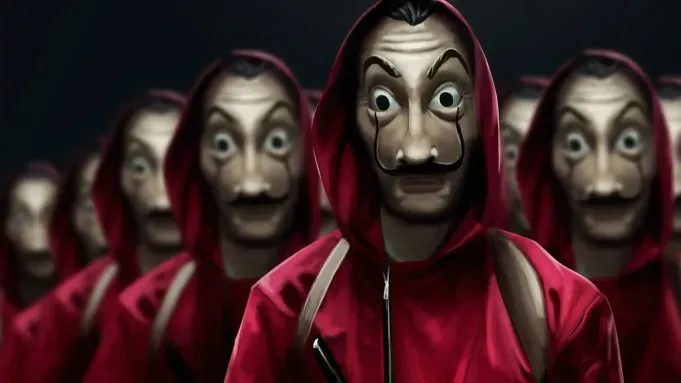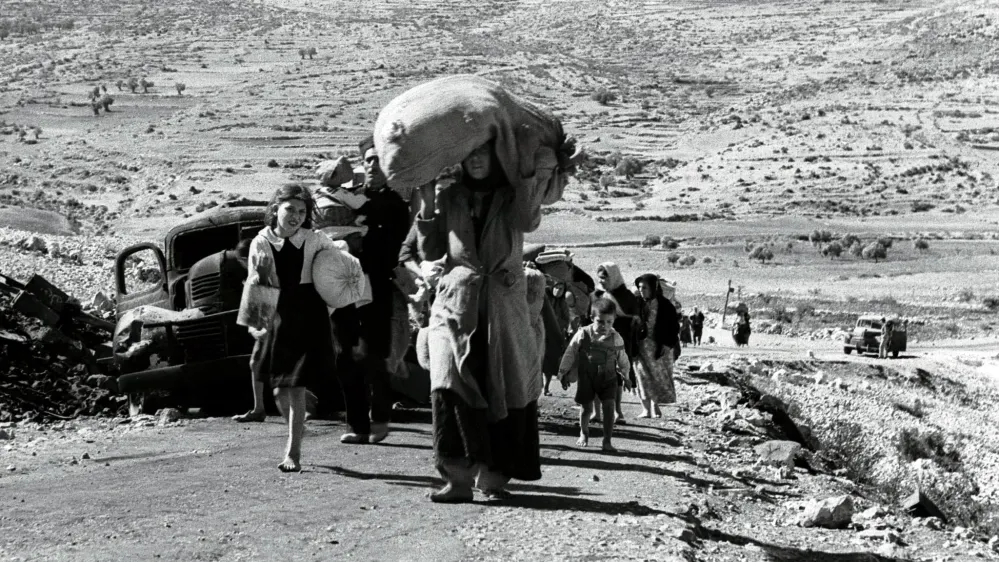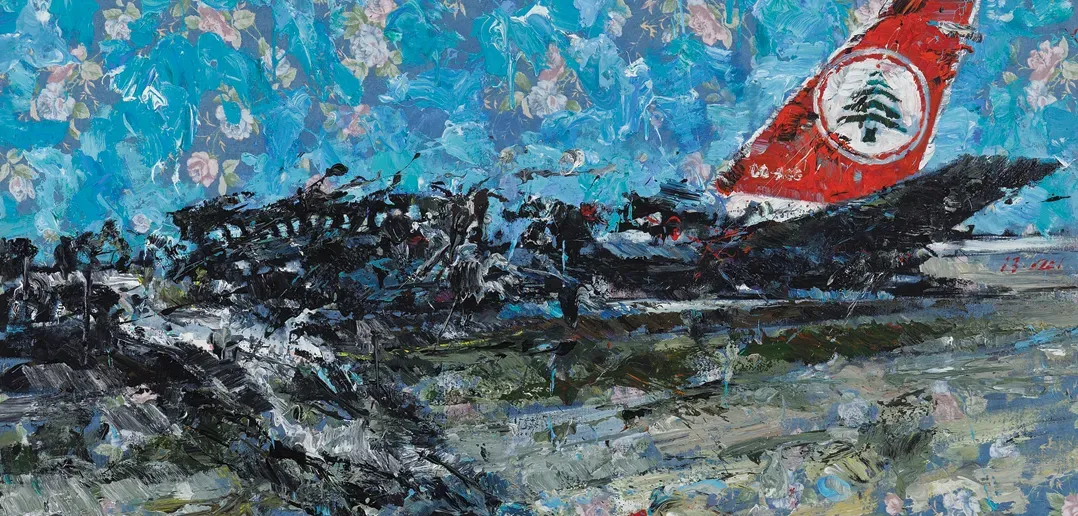Art can be the strongest weapon of liberation against oppression and injustice. It addresses the most vulnerable part of many souls, namely humanity. This is precisely why art excels at conveying the emotions and experiences of others, both in their individuality and collective essence. While no time can compare to the one in which degenerate art emerged, many parallels can be drawn considering the current censorship against pro-Palestinian artists.
The censorship of art is such a strong statement. If the purpose of art is to prompt reflection and challenge the fundamental aspects of a society, the issue arises: who is responsible for establishing the boundaries that restrict its expression? How can one judge right and wrong? How can an emotion or a lived experience be proven right or wrong?
With escalating racism against Arabs, Islamophobia, and essentially the crimes against Palestinians, censorship of them and their allies is currently flagrant. Anyone advocating for Palestine, especially Arab journalists is facing severe consequences, such as termination from their jobs.
Social media censorship is also pervasive, swiftly shadow-banning or suppressing anyone who shares related content. Protests are being banned in some parts of the world, as is the Palestinian flag with the word “Palestine” itself known to be prohibited from use in numerous news outlets as well.
Censorship is a familiar reality for Palestinians. When their flag first got banned in 1967, they also could not use any symbol with the same colours. As a result, the Palestinians used the fruit, watermelon, an ubiquitous object resistant to effective censorship, which has now become one of the symbols of their liberation.
In more recent art, the ambiance of the censorship is unfortunately similar. Screenings of movies for Palestinian liberation are getting cancelled, as are exhibitions. An example amongst many others is Ayman Ba’albaki, a Lebanese artist and painter whose paintings recently got withdrawn from Christie's' biannual auction after a complaint for reasons that are still unclear. Christie's is an auction house and a global hub for exceptional art and luxury pieces.
The Lebanese Civil War influenced Ba'albaki significantly, shaping his perspectives through various regional events such as the Palestinian cause and the Israeli occupation. Thus, a recurring theme in his work often portrays warriors, protests, ruins, and the ongoing conflicts in the Middle East. His artwork often encapsulates a plea for institutions to coexist harmoniously and exhibit fairness toward their constituents. Addressing the root of prevailing wars, conflicts, and oppression, he emphasizes that these issues stem from institutional actions resonating with the United Nations Sustainable Development Goals for Peace, Justice and Strong Institutions.
Ba’albaki’s work also reflects on the United Nations Sustainable Development Goal for Reduced Inequalities. The message of his art itself also promotes this same goal by standing up for Arab and Palestinian causes and asking for better living conditions for them.
Ba’albaki’s Al Mulatham (the masked, in Arabic), which was one of the artworks withdrawn from the auction, showcases a freedom fighter in a keffiyeh with a background of flowers.
Ba’albaki’s work does not only call for change and revolution, but it also sends encouraging messages of hope through the strong symbolism of the keffiyeh that fits perfectly with the colourful flowery background.
Artworks such as these aim to illustrate a multifaceted, simultaneously individual and collective identity, portraying these intricate, abstract, and seemingly elusive elements with vividness and tangibility.
It is also observable in the untitled painting above. While the same patterns, such as the keffiyeh and a colourful background, remain, even when we imagine seeing a full face, it is masked. This is a painting that makes his work and message transcend the Lebanese, Palestinian, Levantine, or Arab identities to become only about universal revolution, liberation, and change.
Most paintings by Ba’albaki showcase the keffiyeh, a scarf that has become a symbol of Palestinian resistance, resilience, struggle, and liberation. While it has been directly associated with terrorism from a few news sources and Islamic extremism for too long, the keffiyeh’s roots date back to 3200 BC in Mesopotamia as it was worn by Babylonians and Sumerians.
It represents the significance of olive leaves, embodying the profound connection between the Levantines and their lands—a symbiotic relationship signifying perseverance, strength, and resilience. The inclusion of fishnets symbolizes Palestinian sailors and their connection to the Mediterranean Sea, while the bold pathways symbolize the natural and cultural trade routes facilitating merchant exchange.
Becoming a central symbol of Palestinian resistance and liberation, the keffiyeh also gained prominence when Yasser Arafat, the former president of the Palestinian National Authority (PNA) and chairman of the Palestine Liberation Organization (PLO), was frequently seen wearing it. Arafat, a prominent political figure advocating for the Palestinian cause, played a pivotal role in the 1993 peace agreement with Israel, ultimately earning him the Nobel Prize in 1994.
Another Ba’albaki painting titled Anonymous, auction, depicts a person wearing a red bandana with “revolutionary” written on it in Arabic as well as a gas mask, which might culturally refer to censorship and oppression. It is a call for revolution and political, economic, and systemic change.
It is also interesting to observe that both Al Mulatham and Anonymous refer to hidden characters who could be anyone, anonymous, or masked. This artistic choice might stem from a focus on broader concepts rather than specific individuals. Many observers of the artwork may find that it is not about a specific man but about revolution, liberation, hope, and change.

Drawing a parallel, the renowned Spanish series Casa de Papel also employs the mask as a symbol, signifying not only resistance but also harbouring sentiments of indignation and skepticism toward their flawed government system.
This can also be understood for other countries in the region, such as Syria and Palestine, since the Levant has been struggling with wars, conflicts, and political hardships that are often interrelated and part of the same Levantine identity.
The Lebanese people's struggle is intimately linked to the Palestinian struggle. Lebanon had been occupied by Israel until 2000. The two states have been at war for decades, even fighting for maritime borders. Lebanon’s land is part of Israel’s “promised land” and there is still a plan to widen its map; the state of Israel has not confirmed any official borders until today.

Lebanon certainly has not endured similar massacres (notably the Nakba, or the catastrophe, where 750 000 Palestinians were displaced and 15 000 were killed), or the current killings in Gaza, but it understands, more than any other state, the Palestinian liberation struggle.
Given the present turbulent political environment and heightened tensions regarding the situation in Gaza, the origin of the censorship may have become more evident. Recognizing that much of the animosity and unrest stems from miscommunication and a lack of understanding of each party's perspective, it becomes crucial, now more than ever, to prioritize education and information. This is essential for achieving peace, security, and Palestinian liberation, ensuring a more informed and nuanced understanding of the complex issues at hand.

In conclusion, current events about the situation in Gaza are no news for the Middle East. Censorship has been going on for decades and is currently reaching a new peak, especially in art that best reflects contemporary society.
Misunderstandings of the symbolics central to one's interpretation of his message led to the censorship of Ayman Ba'albaki's work, which precisely demonstrates this point. His paintings call for liberation through revolution, for a change for better living conditions in the Middle East, and explain the complex experience of the Levantines having to build their identity in the middle of constant wars and conflicts.
By safeguarding universal freedom of speech and expression, the censorship directed at him has paradoxically amplified his visibility and platform as news coverage brought him to the attention of a broader audience. However, the abrupt and unjustified withdrawal of his art shows the necessity for better communication between the West and the Middle East, as well as a growing effort to understand Middle Eastern perspectives.
